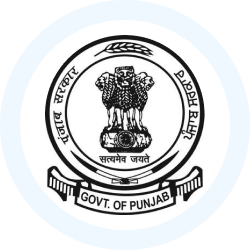PPSC PCS (Punjab) Exam > PPSC PCS (Punjab) Notes > Punjab State (PPSC) PSC: Preparation > Punjab Riyasti Praja Mandal
Punjab Riyasti Praja Mandal | Punjab State (PPSC) PSC: Preparation - PPSC PCS (Punjab) PDF Download
Introduction
The Punjab Riyasti Praja Mandal was founded in 1928 to advocate for the rights and liberties of individuals in the princely states of Punjab. Its main goals included protecting people's rights, establishing representative governance in princely states, and improving the conditions of subjects and peasants.
The formal declaration of the Punjab Riyasti Praja Mandal took place during a public conference organized by workers in Mansa, Patiala, on July 17, 1928. At this conference, Sewa Singh Thikriwala was elected as the President, and Bhagvan Singh Longowalia was appointed as the General Secretary.
Growth of Punjab Riyasti Praja Mandal
- The Punjab Riyasti Praja Mandal expanded its activities to include all the princely states in Punjab, Shimla, and Kashmir. As the central organization, the Praja Mandal was affiliated with the All India States People’s Conference and organized the activities of local units.
- Initially, the organization focused on the four Sikh princely states of Faridkot, Jind, Nabha, and Patiala, particularly targeting the Maharaja of Patiala, Bhupinder Singh. Over time, the Praja Mandal intensified its activities and agitations.
Culmination of Punjab Riyasti Praja Mandal
- In early 1936, the Government of Patiala reached an agreement with Tara Singh, an Akali leader, leading to the release of all Akali prisoners. This agreement further weakened the Praja Mandal as the Akalis withdrew their support.
- In 1945, the Communists were expelled from the Indian National Congress, and the All India State People’s Conference established a regional council for the Punjab states. Brish Bhan was appointed Chairman, and Harbaris Lal became General Secretary, marking a shift in leadership of the Punjab Riyasti Praja Mandal to urban Hindus.
- The struggle for constitutional and administrative reforms in the Princely states continued under the leadership of Giani Zail Singh, a local leader who would later become the President of India. After India gained independence in 1947, the Patiala and East Punjab State Union (PEPSU) was formed, comprising the states of Kalsia, Nalagarh, Kapurthala, Faridkot, Malerkotla, Jind, Nabha, and Patiala. On July 15, 1948, the Princely regimes were abolished, and the Punjab Riyasti Praja Mandal was dissolved, replaced by the PEPSU Pradesh Congress.
The document Punjab Riyasti Praja Mandal | Punjab State (PPSC) PSC: Preparation - PPSC PCS (Punjab) is a part of the PPSC PCS (Punjab) Course Punjab State (PPSC) PSC: Preparation.
All you need of PPSC PCS (Punjab) at this link: PPSC PCS (Punjab)
|
23 videos|50 docs|47 tests
|
Related Searches





















